This past holiday season, a very heated and yet quizzically trivial online debate was raging amongst American progressives. Is being angry at the rise in McDonalds’ prices a subtle attack on the working poor?
The debate arose when Doug Henwood, a left-leaning newsletter writer and journalist, lamented the high prices he paid for a three-person McDonalds lunch on social media in late December.
What Doug Henwood Actually Said
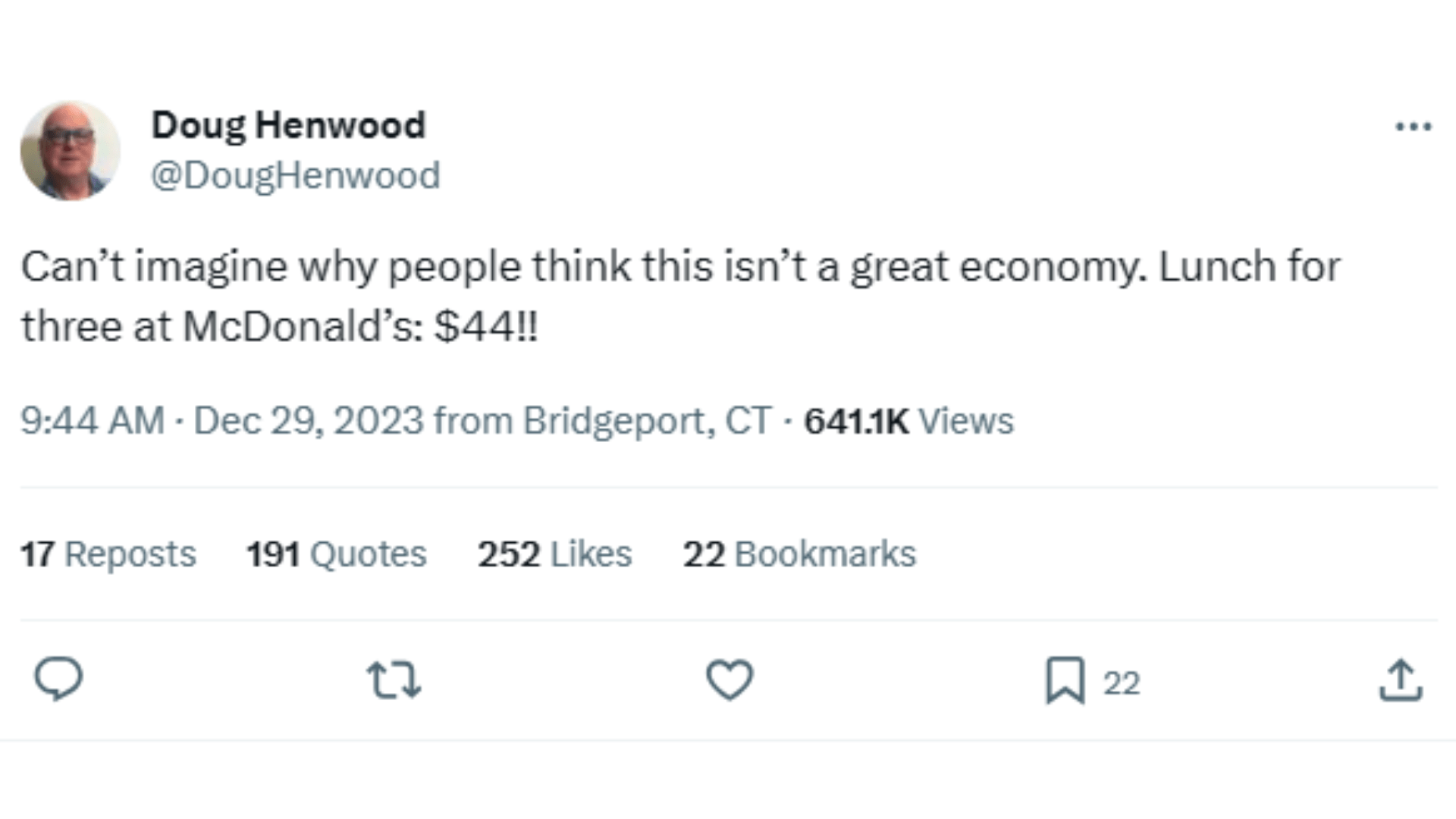
Doug Henwood took to social media platform X after finishing what he felt was an incredibly overpriced fast-food meal: “Can’t imagine why people think this isn’t a great economy. Lunch for three at McDonald’s: $44!!”
After being attacked by progressives on the platform, Henwood reiterated his point by insisting that all he meant was that his very high-priced fast-food bill was representative of inflated food prices.
Why Progressives Were Attacking Henwood
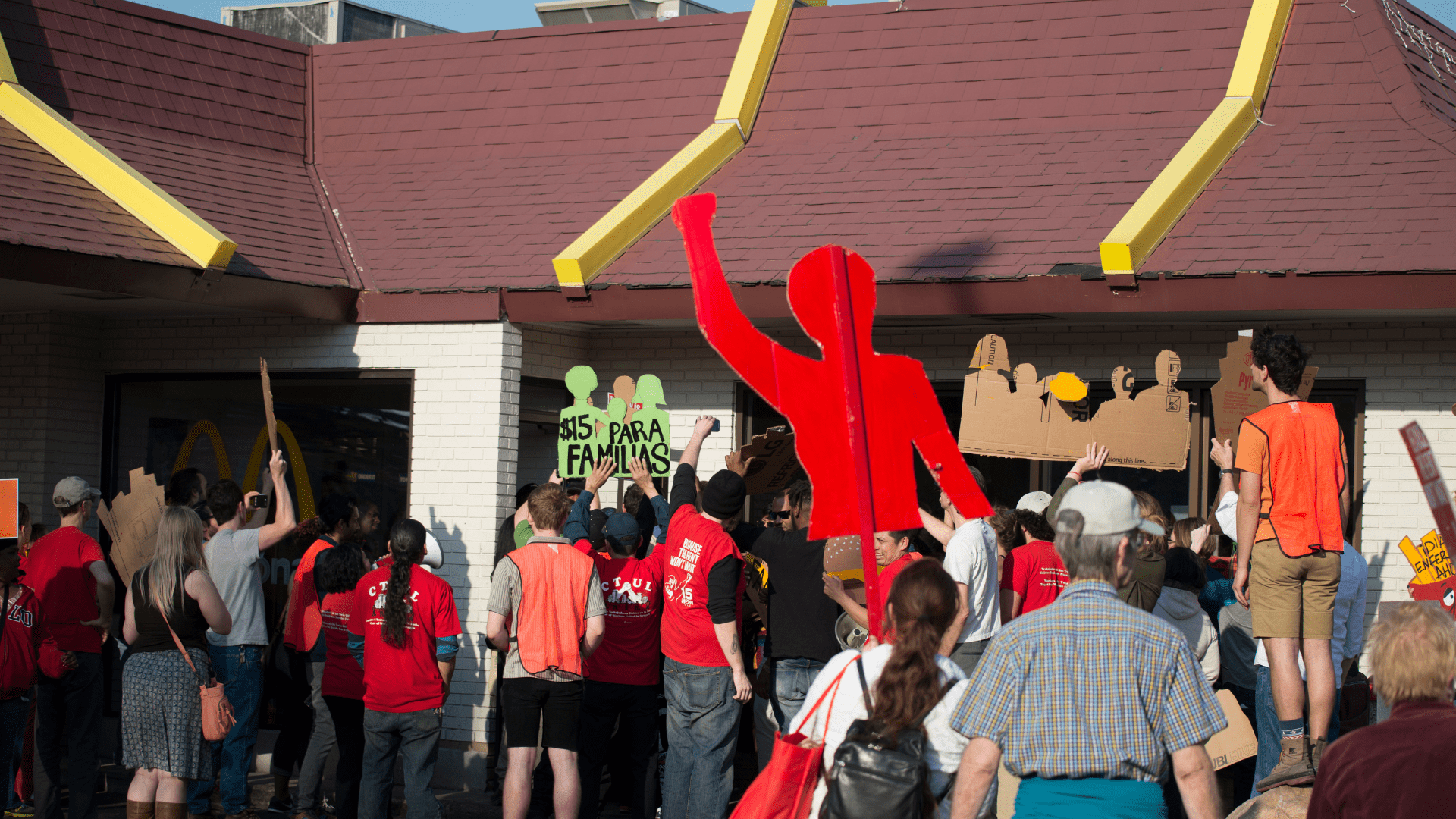
Apparently, many progressives on X felt that Henwood was making an implied assault on the gains low-wage workers had made over recent years.
They argued that wage increases have caused employers’ payrolls to grow, which translates to higher-priced products. It seemed to them that Henwood was no longer towing their ideological line–he was in effect decrying the wins of the working class.
A Contradiction for Progressives

Progressives have two different considerations on their minds which can lead to a contradiction in their criticism. On the one hand, they view corporations as greedy and will call out them for raising prices on customers.
On the other hand, they support minimum wage hikes for those corporations’ employees that will undoubtedly cause the company to raise their prices across the board to cover the new wages.
It Really Was Just About Inflated Food Prices
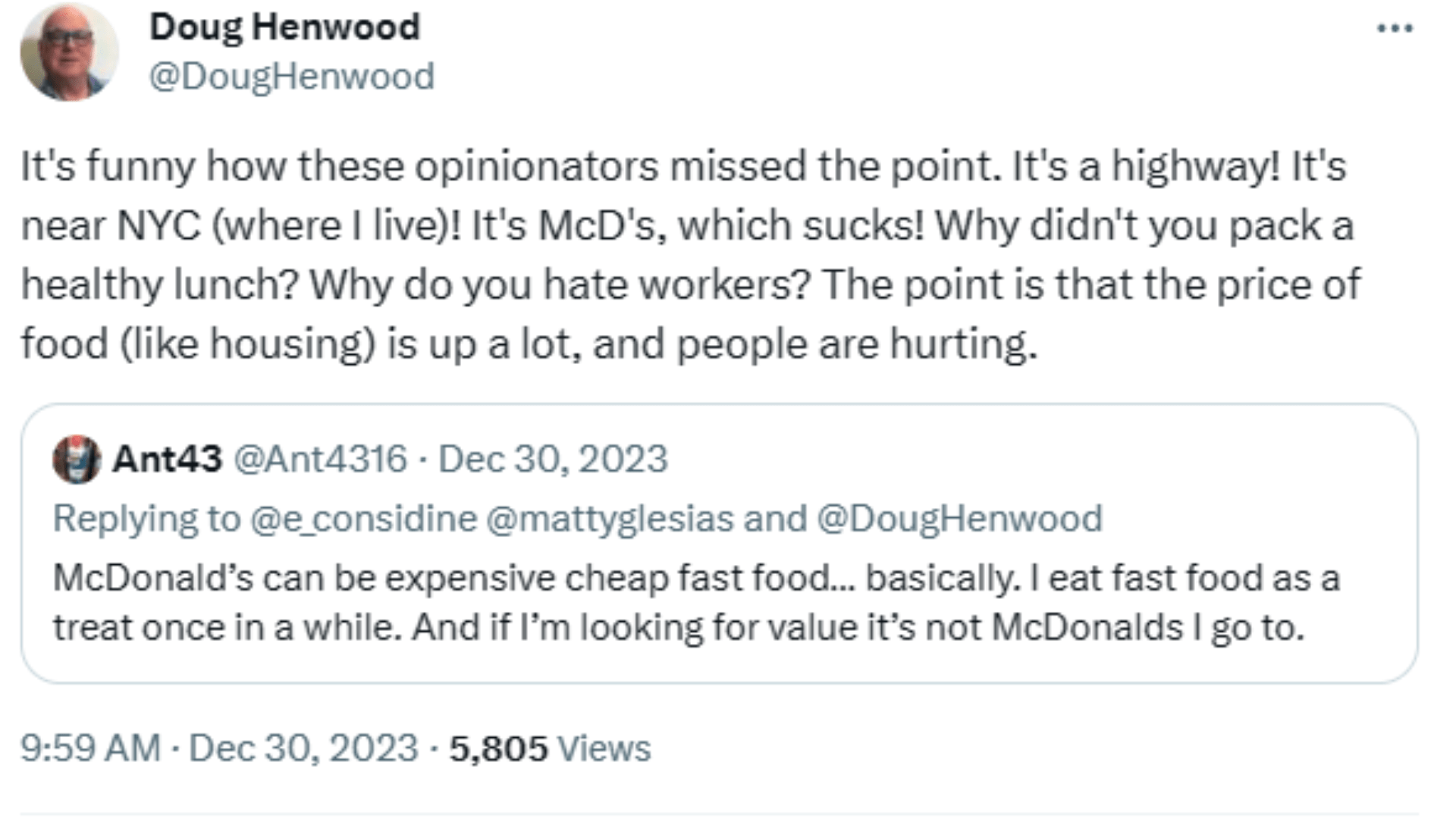
Henwood stood his ground against the onslaught of opinions. It really was just about inflated food prices. After all, rising costs of bread and meat would obviously make a burger chain’s price point go up.
Also, Henwood felt he had probably been price-gouged, seeing as he’d bought the meal at a highway rest stop, where restaurants and gas stations often use the limited availability of food and gas to their advantage.
Henwood is Not Alone
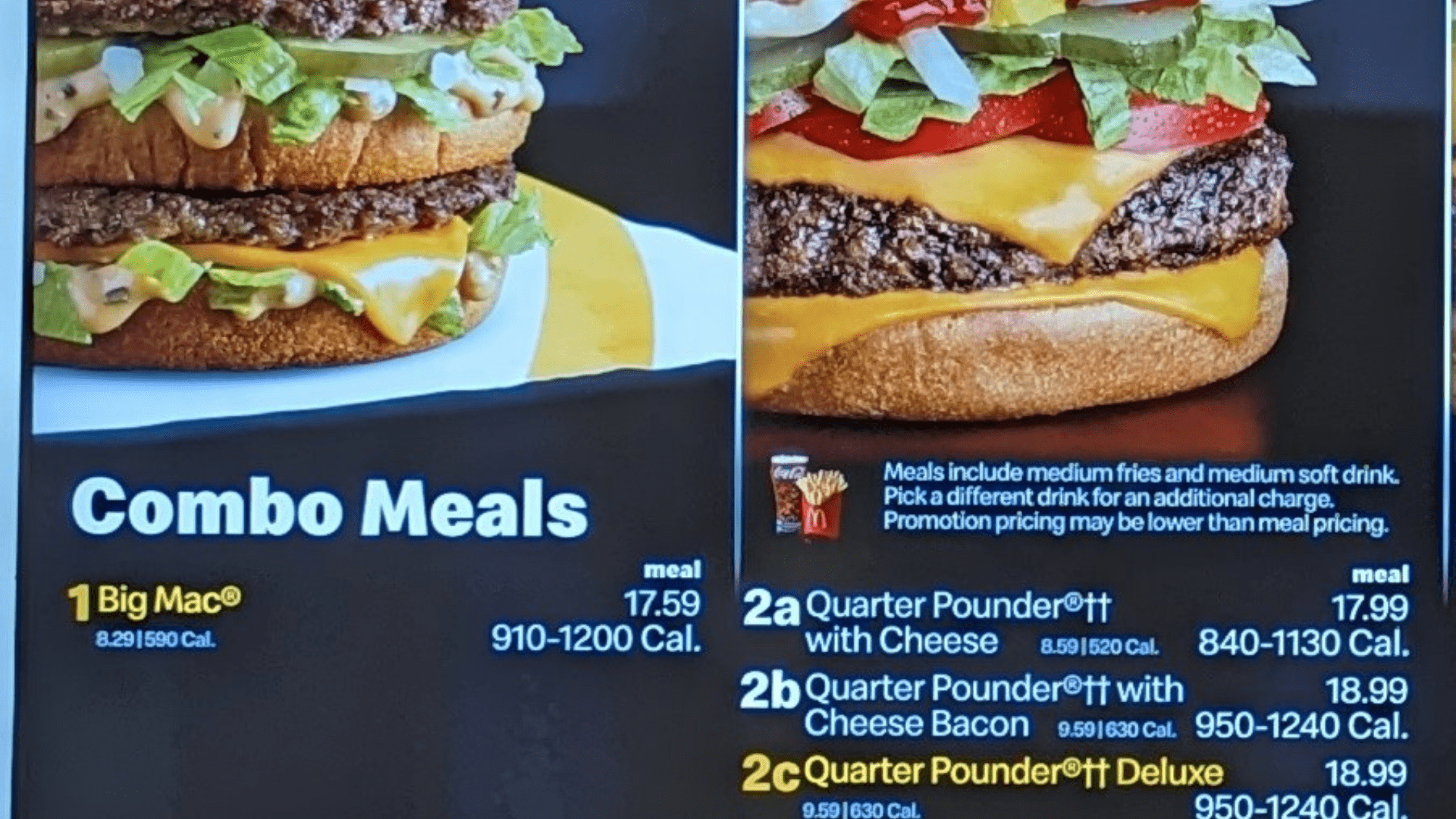
There are many others beside the political commentator who feel that fast food prices have become unwieldy. For instance, others online have been agitated by the $18 Big Mac combo meal.
The above images were posted to X by FT Data journalist Sam Learner. He posted them with a tweet reading, “This was at a rest stop, but these McDonald’s prices are nuts right???”
Food Prices Rising Across the Country

The United States Department of Agriculture found that food prices increased across the board in all food categories in 2022.
The USDA calculated food prices increased 9.9 percent in that year. People eating at home experienced an 11.4 percent increase in their food expenses. For people who ate out at restaurants like McDonald’s they saw a 7.7 percent increase in prices.
Other Examples of Rising Food Prices

It’s not only McDonalds–it’s pretty much every eatery. Chipotle’s prices rose an astonishing 13% in 2022, followed by a 4% bump in 2023.
Starbucks has also begun skillfully increasing prices through subtler means. They kept their price increases so minimal that hardly anyone noticed. However, they made drink modifications cost significantly more. This move was very smart, since it reduces perceived price increase, yet achieves real revenue growth since so many of their customers use specific modifications.
Recent Inflation to Blame

In 2023, News Nation reported that fast food prices have reached a record high. Fast food businesses have to contend with the same rising price of ingredients that those who shop at the grocery store have to deal with.
The Legislative Analyst’s Office found that inflation is slowing down in recent months which may give businesses some respite. However, prices have still increased by 19 percent in the overall economy since 2020.
Biden’s Efforts Have Mixed Results
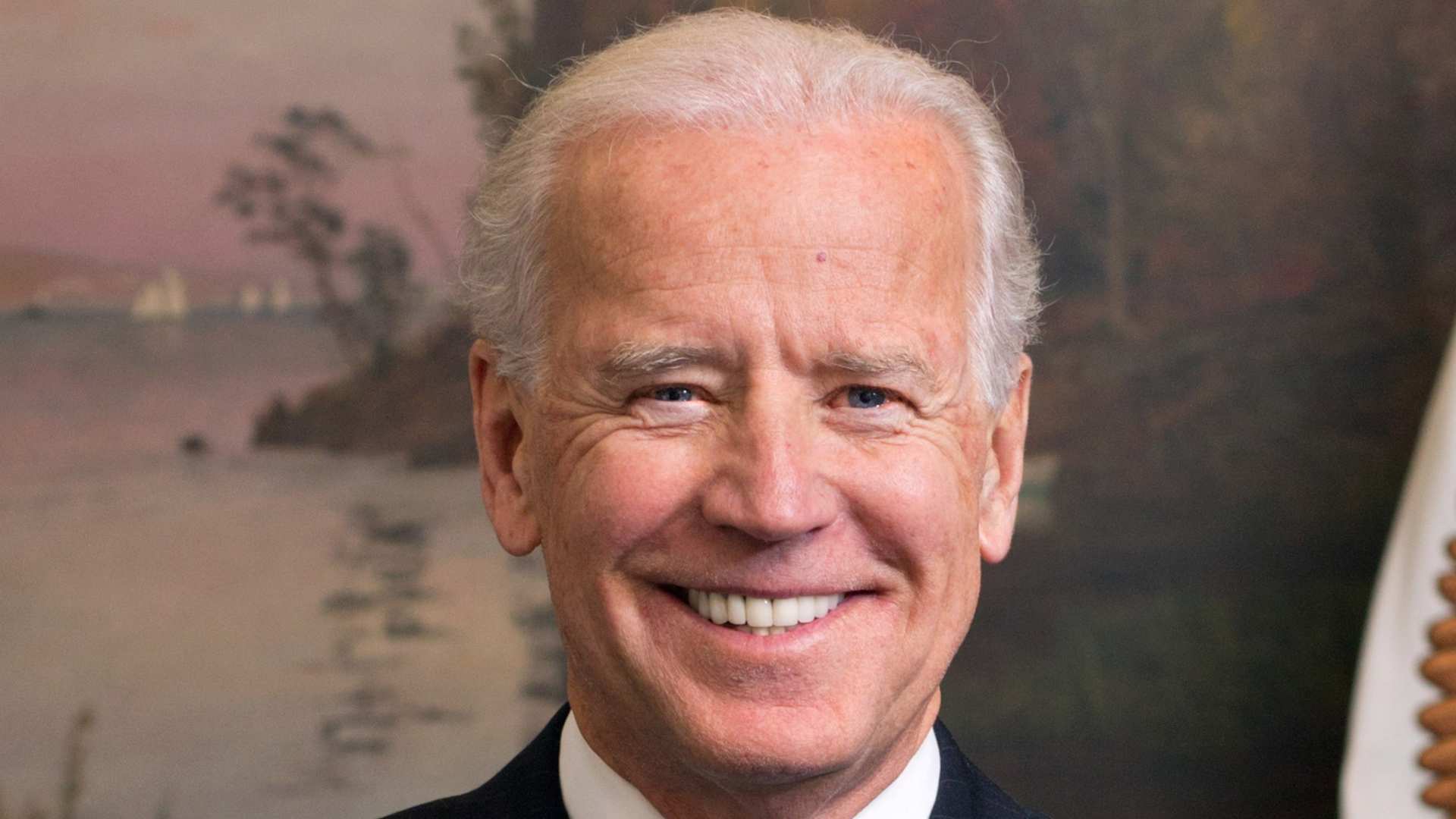
President Biden assumed office in January 2021 with a mandate to help revive the economy which was struggling under the weight of a worldwide pandemic.
In his first year, he initiated the American Rescue Plan Act which gave checks to every US adult, helping many Americans pay their bills. The same year he was able to pass an infrastructure bill worth over $1 trillion which put people back to work and improved public transit. Unfortunately, his efforts weren’t able to stem inflation effectively.
Biden Takes the Blame for Rising Food Prices

The effects of inflation have had dire consequences for President Biden and Democrats.
There is a tendency in voter’s minds to assign blame to whoever is in charge of the country at the time, regardless of whatever efforts they have put in to help the situation. In 2021, The New York Post reported that 80% of Americans blamed Biden for inflated prices.
Burdens on the Middle Class?

Lowering the number of working poor in a society is beneficial for pretty much everyone. However, this is a long game that is often obscured by perceived short-term burdens.
To reduce income inequality, the cost of labor must rise, at least for some time period. But what happens is that the middle-class often experience labor cost increases as an encumbrance. Ideally, society could manage and offset the related price hikes through public policy, but that is often difficult to carry out fully.
The Growing Equality

Since 2020, the U.S. economy has actually become less unequal. However, this hasn’t really equated to popular appraisal of the economy. In fact, according to a Gallup poll published in the fall of 2023, only 20% of the U.S.’s adults believe the nation’s economic conditions are “excellent” or “good.”
But these trends might not be completely related. It’s very unlikely that the general consumer is going to care all that much about lowered income inequality, since it’s a fairly abstract concept. Who has the time or energy to contemplate this when it’s hard enough to buy the groceries your family needs to survive?
The Cost of Equality

It is, however, true to some extent that an influx of options for low-wage workers is linked to a growing discontent with the state of the U.S. economy.
As labor demands have increased, low-wage workers have been able to negotiate for better compensation or simply up and leave valueless jobs. This has resulted in more expensive and less available services that are labor-intensive. For example, child care has become more difficult to secure as workers in the field have moved on to better occupations, and fast food has gone through the roof as employees have secured higher wages.
Less Working Poor Is Better for Everyone

As mentioned previously in passing, most of society stands to benefit from increases in the working class’s wages in the long run–even if that means that a burden is shouldered for a short while by the middle class.
Rises in working class wages are probably a huge driver of increased productivity for businesses. If labor is extremely cheap, companies have no incentive to develop labor-saving processes or technologies. When payroll goes up, however, companies are almost forced into such innovation.
How Innovation Lowers Prices

So, increases in labor costs forces businesses to innovate and develop methods of production and technologies that alleviate such costs. The reason why the Big Mac is still $18 is because McDonalds has yet to achieve enough increases in labor-saving productivity to reduce costs.
However, over time, businesses like McDonalds will likely achieve sufficient increases in productivity due to the continued pressure of labor costs. When they do, their products will become more affordable again.
Fight for Minimum Wage

In an effort to fight wealth inequality, legislatures across America are fighting to increase the minimum wage, particularly for fast food workers.
In 2024, California will raise the minimum wage of fast food workers from $16 an hour to $20 an hour. A $4 increase may not sound like but it will provide a huge benefit for struggling workers. The wage increase will only apply to fast-food chains that have 60 or more locations in the United States.
Minimum Wage Increase Might Not Be the Answer
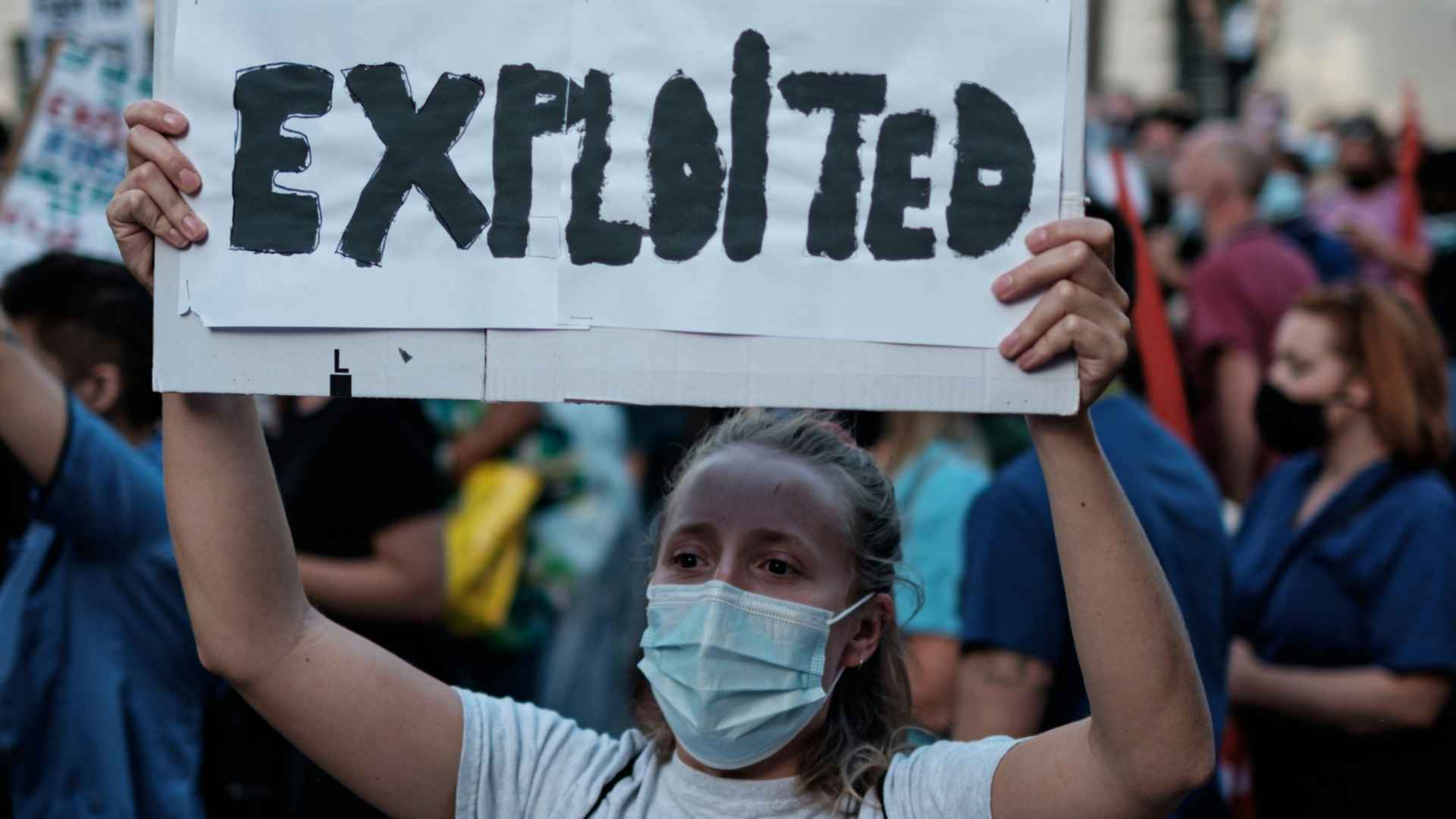
While a minimum wage increase can put more money in the hands of workers and improve the equality of the economy, it might not be the perfect solution.
In response to wage hikes, restaurants often choose to cut worker hours to compensate for the increased payroll cost. These companies may also choose to fire workers and stick the workers they keep with an increased workload.
The Looming Threat of Fast Food Automation

A dark force in the background of the economy is the increasing likelihood of automation in the American workforce.
As technology improves every year, the threat of workers being replaced by robots becomes more dangerous. For its part, McDonald’s has already developed a fully automated restaurant that only requires minimal human maintenance and interaction. The economy may not survive a massive shift from human labor to cheaper automated labor.
Declining Fast-food Workers in America

According to IBIS World, there were approximately 4.7 million people employed by US fast-food restaurants in 2023. However, in recent years, there have been labor shortages in the industry.
Potential fast-food workers are driven away from their jobs because of the low pay and lack of respect from employers. Many workers who left during the height of the pandemic have yet to return in large enough numbers to sustain the industry.
Is a McDonald’s Boycott Possible?
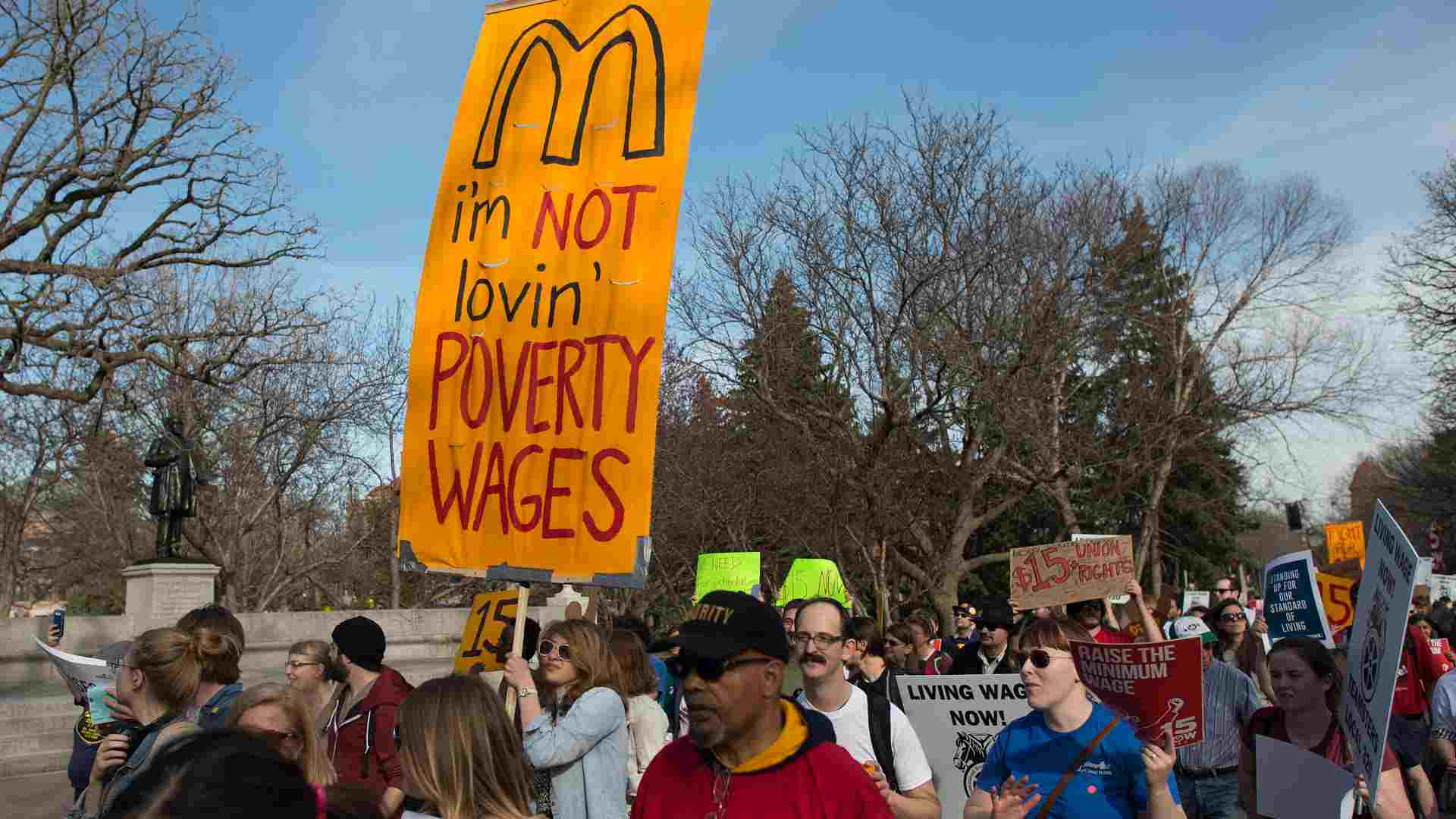
With a growing number of people becoming dissatisfied with McDonald’s, a widescale protest is becoming more likely.
While boycotts can often be a passing fad on social media, there is a point where customers have had enough. A successful boycott is won in inches, and McDonald’s may be forced to reevaluate its pricing strategy if its competitors can provide a more affordable product.
Customers Increasingly Critical of McDonald’s Israel-Hamas Stance

Dissatisfaction with the restaurant is already on the rise. Fortune reported in January 2024 that the Israel-Hamas war has created boycotts in the Arab World that have hurt the company’s sales in the region.
The BBC reported that McDonald’s feels it is suffering from a misinformation campaign and is gearing up to deal with boycotts from political groups. Reuters reported in January that McDonald’s Malaysia plans to sue an Israel boycott in the country that has cost them substantial profits.
McDonald’s Trying to Distract from the Issues
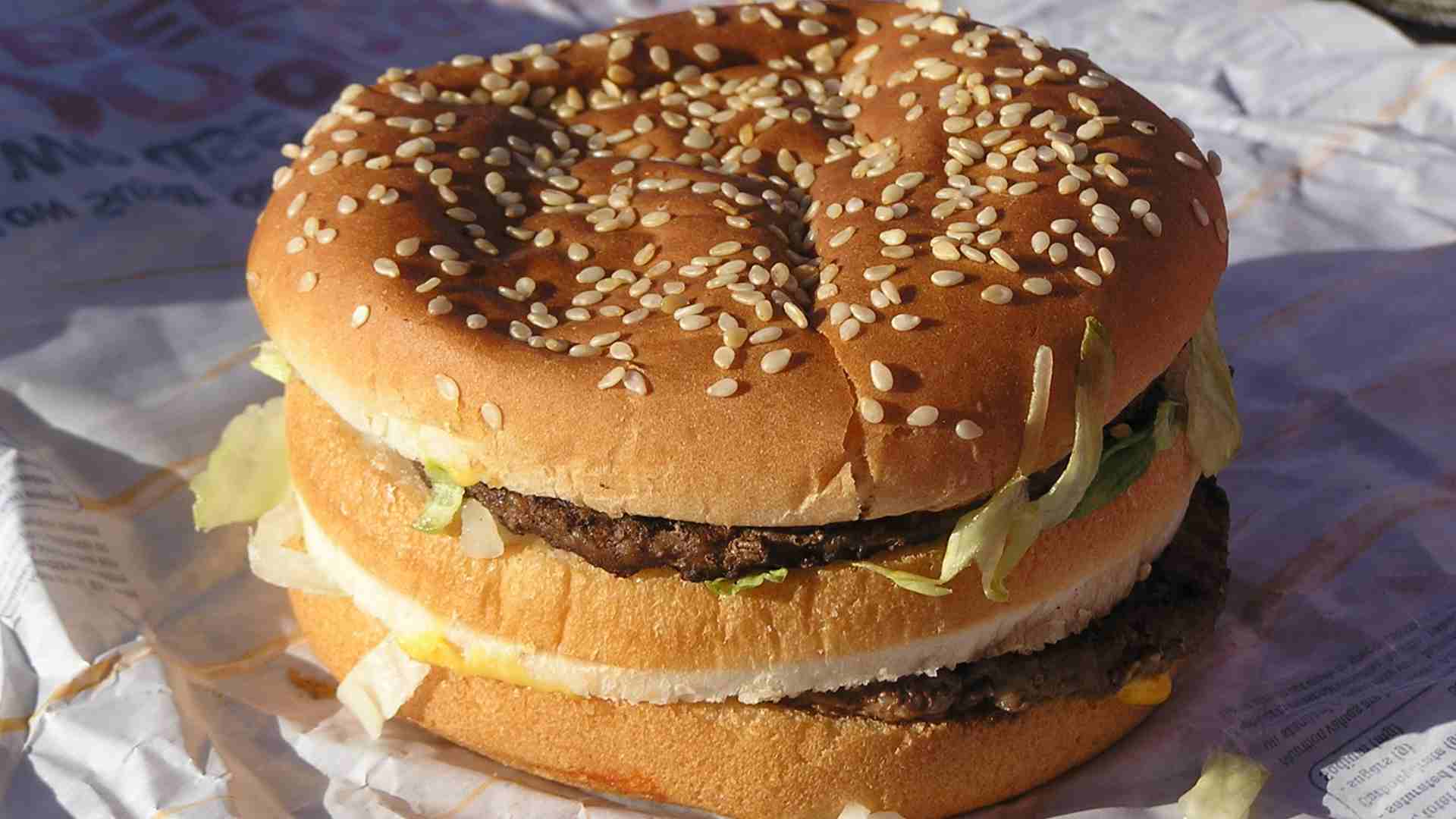
At the same time news is dropping about McDonald’s price hikes and Israel-Hamas boycotts, McDonald’s announced the return of the Double Big Mac.
The Double Big Mac received excited buzz from users of social media, even though it is only being brought back for a limited amount of time. The item was last available for purchase in 2020, making it nearly four years since fans have had a chance to taste it.
The $18 Big Mac is the Beginning of a Revolution

If this line of thinking stands up to reason, there might just be a future in store where inexpensive fast food being partially produced and handled by high working-class wages.
Therefore, the middle class does not need to see the current $18 Big Mac combo as a symbol of the U.S. economy’s dire straits. Instead, it might just be the peak of a mountain we cannot yet see over. On the other side may lie the fertile fields of a less unequal, more productive society.
